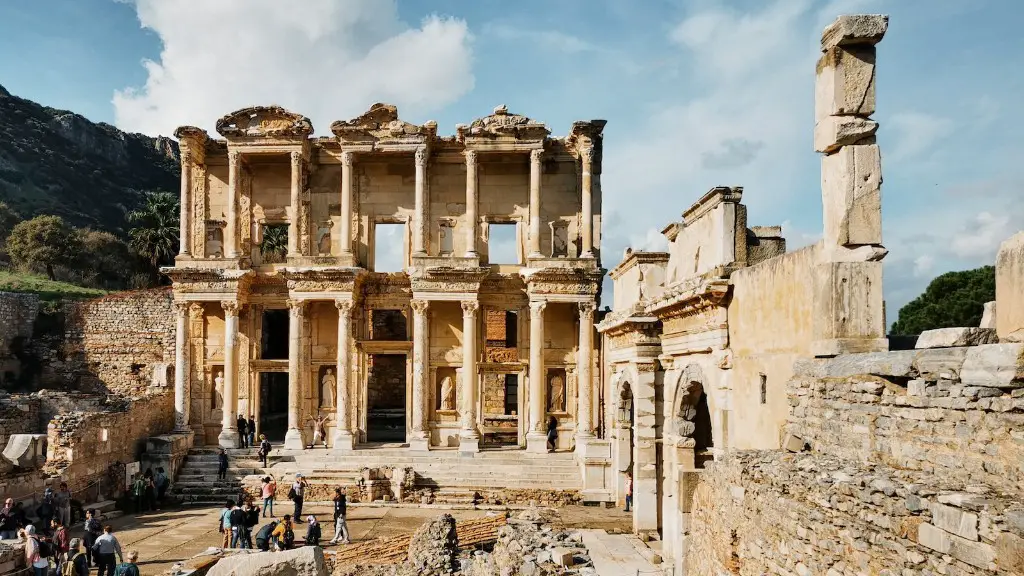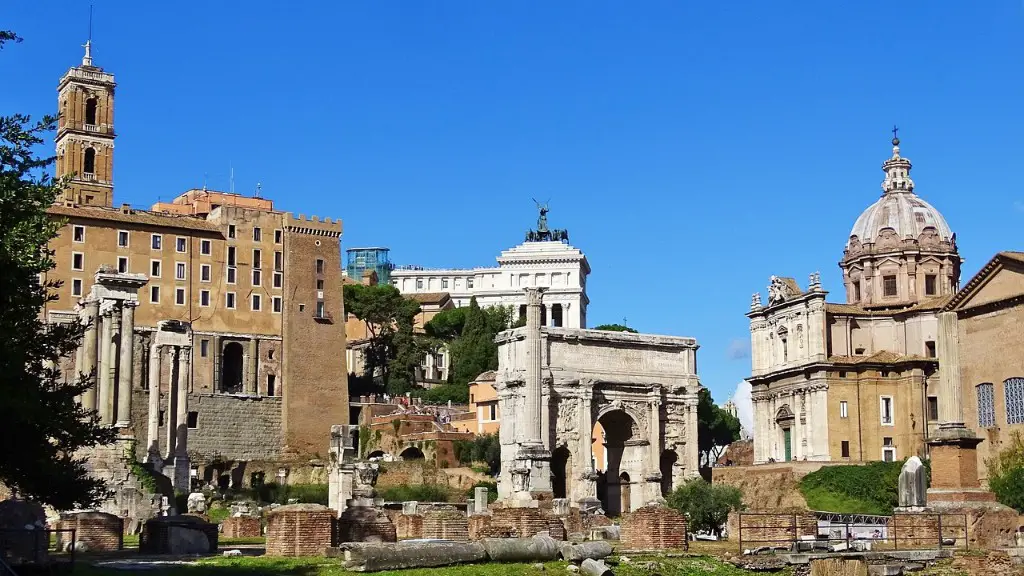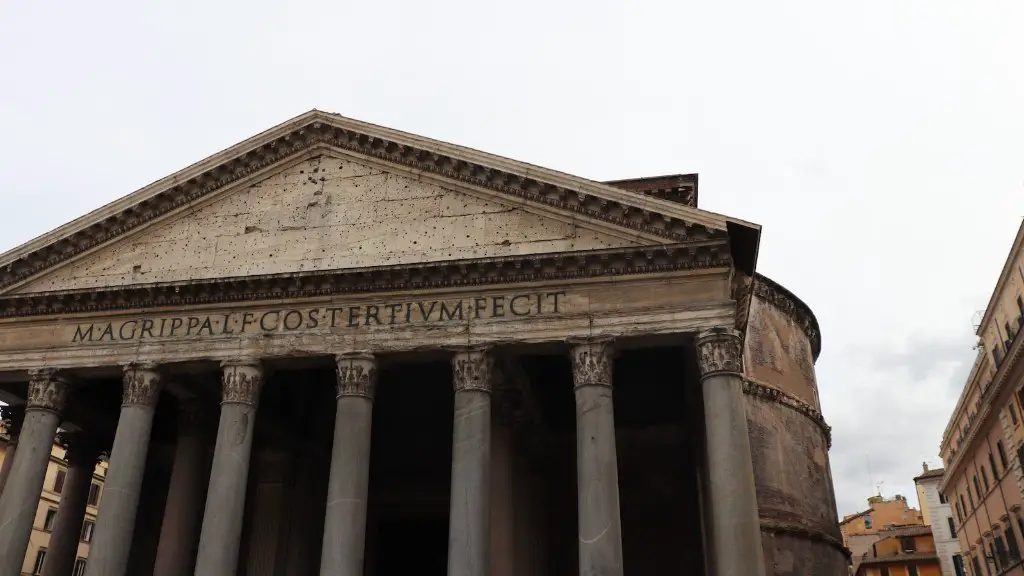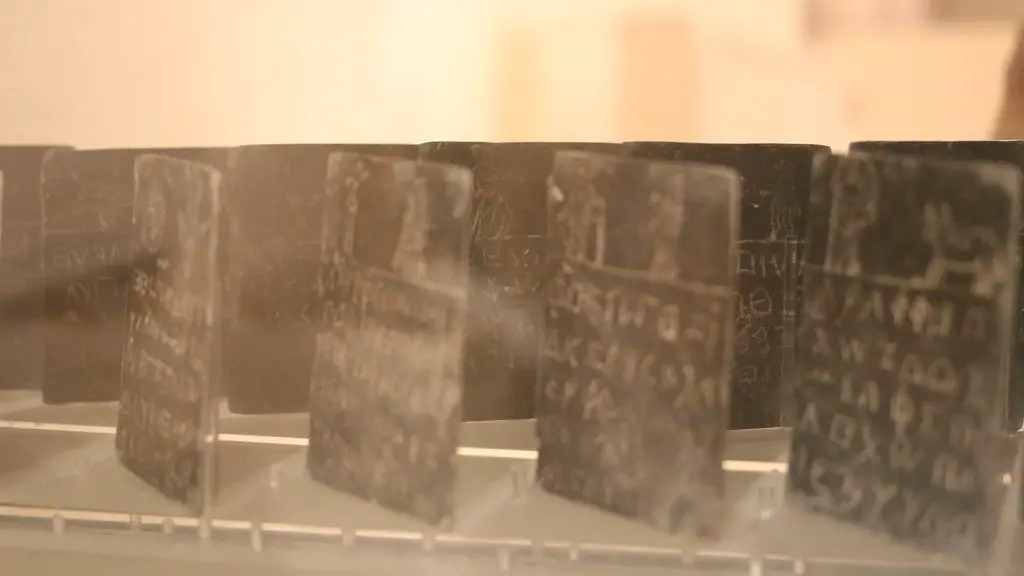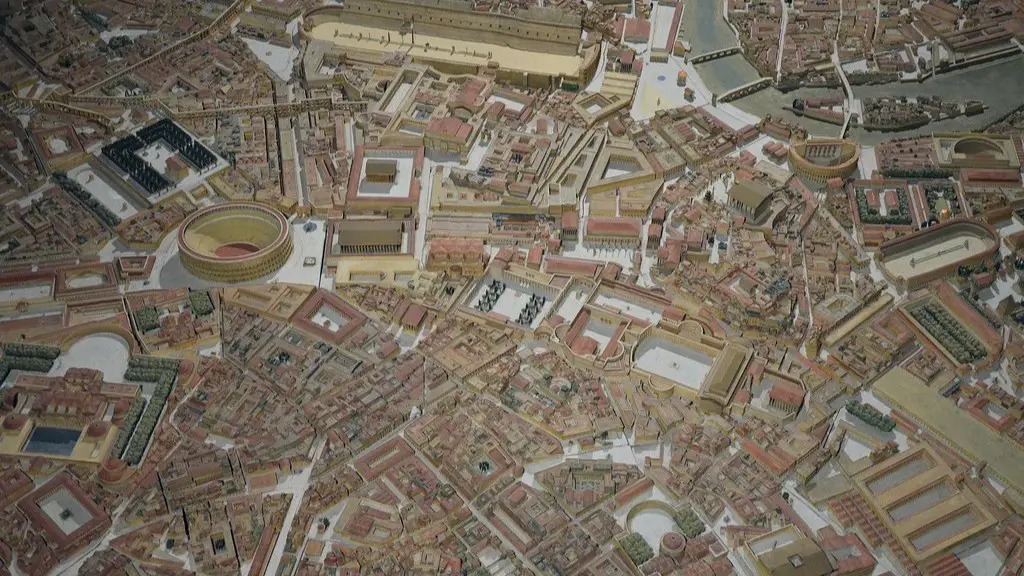Crops Grown in Ancient Rome
The Roman Empire was well known for its engineering feats and accomplishments, but the wealth and power of their empire was also secured by their land-owning elite. Ancient Rome was an agrarian society, which means most of the population was involved in farming. The crops grown in Ancient Rome were a source of sustenance, commerce and food trade.
Foraged goods, such as edible fruits, herbs and wild greens, were part of the main diet of Ancient Romans. The food grown in the gardens and fields was the base for all their sustenance, trade goods and exports. They relied heavily on the crops their land provided for sustenance and wealth.
Most of the staple foods we recognize today were grown in Ancient Rome. Wheat, barley, legumes and pulse were the main grains cultivated. Fruits included apples, pears, plums, figs, dates and avocadoes; olives were grown for their oil; and vegetables included cauliflower, cabbage and onions. Grapes were grown to make wine, but it was mostly consumed by the upper class.
Livestock such as cattle, horses and pigs were also kept by landowners, but not as a food commodity. Ancient Roman farmers utilized manure to fertilize their crops, in an effort to increase the yield of their harvests.
Grain production was a key contributor to the wealth of Ancient Rome. Local breads and pies were made with the flour, which was also shipped throughout the empire. Wheat formed a significant part of the export trade, as much of it was purchased by Greek traders.
The Roman government employed its resources to make sure the land was cultivated and farmed adequately, as the crops formed part of their wealth and currency. For example, five thousand acres of land owned by the crown was rented to farmers for three years – drought or poor soil quality were not considered an excuse for making a lame crop.
The funds and resources needed to cultivate the crops was supported by the Roman Senate and Emperor. Through their resources dispersed around the empire, Ancient Roman farmers were able to activate an impressive structure.
Agriculture in Roman Villas
The wealthy Roman elites had access to large tracts of land, giving them privileged access to income, power and status. Their wealth was further secured by owning large plots of land and owning slaves that handled labor-intensive agricultural tasks. Most of the villas had extensive farming areas and sophisticated agricultural technology that supported their production.
The villas were extensively managed with committees called ‘collegia’ – these boards oversaw the management of the estate. Within the collegia, there were administrators assigned as accountants, painters and public works managers. Ancient Roman farmers were well supervised and understood the importance of proper husbandry, cultivating and harvesting only what was needed for the villas.
Wealthy landowners prided themselves in their gardens, with description of gardens and villas covered in Ancient Roman texts. In the Villas, there were amphitheaters and gardens featuring vineyards, fruit trees, sunken gardens and various types of sculptures. Still today, many of these areas have been discovered and documented by archaeologists.
Water was of fundamental importance to the Romans, as it was necessary to irrigate the land for crop production. Water was used to irrigate crops and troughs and tanks were used to store water. With access to an ample reservoir of water, Ancient Roman farmers were able to cultivate large scale planting beds and use water from the nearby Edens or rivers and lakes.
The ancient Romans managed and harvested their crops, storing them in specific store rooms, and if needed, dried them in order to preserve their properties. The stored produce was used for food, or for commercial activities such as selling and trading, in addition to the occasional distribution. Through these adaptive measures, the Roman farmers maintained a healthy and sustainable agricultural system.
Technological Advances in Ancient Rome
Ancient Roman farmers perfected methods to cultivate their land and managed the application of fertilizers, such as manure, in order to optimize their harvests. In addition to their understanding of the necessary conditions for successful farming, such as adequate soil nutrition and water, they developed infrastructure aimed at making farming easier and more efficient.
Various tools and farming utensils have been discovered throughout their ancient sites, indicating an advanced level of understanding and ingenuity. The tools they developed and utilized included hoes, sickles, scythes, reaping-hooks, rakes, milling-stones, pestles and sieves.
Zeno of Citium, known as the father of Stoicism, is credited with inspiring technological advances in farming, including the creation of water turbine-powered machines for mills. The Romans were noted for their use of advanced ploughs – the ‘aratea’ was a version of the socketed ard, a type of plough which was used for deep ploughing.
The Roman farmers persisted with the land and used their scientific know-how to maximize their yields and maintain their crops. They had innovative ideas and knowledge to develop their farming methods, tools and machinery. Ancient Rome is truly an example to demonstrate the power of good management and engineering.
Conclusion of Roman Agriculture
The Roman Empire was able to sustain itself on agriculture and had extensive knowledge of farming systems and processes. Ancient Romans used farming as part of a global and economic strategy, creating a powerful civilization that survives in many aspects today.
While it can be argued that Ancient Rome was largely supported by its vast empire and the captured commodities it produced, it is argued that its wealth and power was sustained by its agricultural methods, its refined know-how and its determination. Ideas from Roman times are still profoundly used today, as farmers and historians alike seek to honor the legacy of Ancient Rome.
Legacy of Roman Agriculture
The past techniques used by Ancient Roman farmers, such as crop rotation, would be recognizable today. In modern agricultural systems, crop rotation is utilized to minimize the depletion of soil nutrients, prevent the buildup of pests, and provide a diverse range of crops. In Ancient Rome, different types of trees and shrubs were intercropped with crop plants, in order to enhance soils as well as boost yields.
The methods and technologies employed by the Ancient Roman farmers still remain applicable to farmers today. By examining the methods and technologies employed by the Ancient Romans, modern-day farmers can gain insight into how to make the most of their land, tools and resources.
The legacy of Ancient Roman farmers serves as a reminder of the importance of utilizing our assets to the fullest, and to strive for excellence in every field. From their techniques, ideas, products and practices, the spirit of innovation is alive and vibrant in Roman agriculture.
Environmental Impacts of Ancient Rome
Archaeological studies of Roman settlement sites mainly reveal practices that were beneficial for the environment. For example, the Romans were adept at conserving water by utilizing the most efficient methods for drainage, irrigation and farming. This ensured that there was adequate supply of water for both cultivation and domestic consumption.
Ancient Roman farmers also operated a great variety of crop-raising methods which prevented soil erosion. These included terracing, mulching and using sacks to contain topsoil when it was being transported. Crop-rotation was also practiced in order to increase nutrient levels in the soil and to adjust the crop cultivation areas.
In addition, evidence also suggests that Roman farmers followed environmental sustainability practice, such as crop rotation which greatly strengthened the soil by replenishing its nutrients. This helped to maximize the growth of crops and prevented soil erosion.
Ancient Roman farmers made conscious efforts to conserve their resources and nature’s bounty, maximising the productivity of their land while minimising the impact on the environment. This was substantially beneficial to the Romans and their land, providing them with more resources, options and an increased ability to adapt to their environment.
Food Culture in Ancient Rome
The Roman dining experience was as much about luxury and celebration as it was about sustenance. Ancient Roman farmers provided much of the food, cultivated and produced in abundance.
Roman meals were carefully prepared and indulged in with sumptuous delight. From sophisticated feasts to light snacks, the Roman citizen had a variety of food options on their plate.
The main agricultural products that Ancient Rome relied on were cereal grains, such as wheat and spelt, as well as legumes, such as lentils and chickpeas. Fruits included apples, pears, and plums; olives were also popular and provided oil for flavouring dishes. Roman historians said that the Romans feasted on “everything from the sea, everything from the land, everything from the farms and everything from the orchards.”
All of the produce grown in Ancient Rome was not only used for sustenance but served as a form of entertainment. Emperor Augustus was documented to invite guests over lavish, elaborate feasts with extraordinary dishes and wine. Additionally, there is evidence that bread not only served as a source of sustenance but entertainment as well. This is when, instead of being served as a side dish, bread was toasted and served as a delicacy called ‘pane soprassata’.
The food culture in Ancient Rome was abundant, supported by their capability of cultivating a variety of crops. They relied on crop varieties to sustain their culture, society and wealth – and their knowledge of how to maximize their soil and resources are still utilized today.
